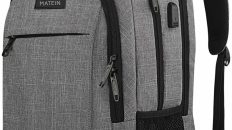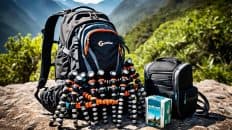When it comes to travel accessories, having the right mask strap is essential for a comfortable and secure experience. Whether you’re diving, snorkeling, or simply enjoying the beach, a high-quality mask strap can make all the difference. It not only provides a secure fit but also ensures your mask stays in place throughout your underwater adventures.
When choosing a travel mask strap, there are several key factors to consider. First and foremost, comfort is crucial. Look for a strap that is adjustable and made from lightweight materials. This will allow you to customize the fit to your liking while reducing any unnecessary strain on your neck.
Another important consideration is durability. You want a mask strap that is built to last, capable of withstanding the rigors of travel and various water conditions. Look for a strap that is made from high-quality materials and designed to withstand wear and tear. This will ensure your mask strap remains reliable and functional trip after trip.
Key Takeaways:
- Choose a travel mask strap that is comfortable and adjustable for a secure fit.
- Opt for a lightweight and durable mask strap that can withstand travel and water conditions.
- Consider the materials and design of the strap to ensure long-lasting reliability.
- Invest in a high-quality mask strap to enhance your travel experience.
- Prioritize both comfort and security when selecting a travel spare mask strap.
Materials and Construction of Scuba Masks
Scuba masks are essential equipment for divers, providing clear vision and a comfortable fit underwater. The materials used in the construction of scuba masks play a crucial role in their performance and durability. Let’s explore the key components of scuba masks:
Tempered Glass Windows
The windows of scuba masks should always be made from tempered glass. Tempered glass is a type of safety glass that undergoes a special heating and cooling process to enhance its strength and resistance to breaking. It is designed to shatter into small, less dangerous pieces upon impact, reducing the risk of injury. Tempered glass windows provide excellent clarity and are essential for the safety of divers.
Silicone Skirt
The skirt of a scuba mask is the part that creates a seal against the diver’s face. It is typically made from soft silicone, which offers a comfortable and secure fit. The silicone skirt conforms to the contours of the diver’s face, preventing water from entering the mask. For added security, high-quality scuba masks feature a double silicone seal at the top of the mask and a single seal at the bottom.
Plastic Windows
It’s important to note that masks designed for snorkeling or swimming may have windows made of plastic. While plastic windows are suitable for surface activities, they are not recommended for scuba diving. Plastic windows may not offer the same level of clarity as tempered glass, and they are more prone to scratching and fogging. Scuba masks should always have tempered glass windows for optimum performance and safety.
| Materials | Features |
|---|---|
| Tempered Glass | Provides safety and clarity |
| Silicone Skirt | Offers a comfortable and secure fit |
| Plastic Windows | Not recommended for scuba diving |
Choosing a scuba mask crafted from durable materials like tempered glass and featuring a reliable silicone skirt is crucial for a successful diving experience. By prioritizing the right materials and construction, divers can ensure clarity, comfort, and safety underwater.
Adjustment Straps for Comfort and Security
When it comes to scuba masks, comfort and security are paramount. That’s where adjustment straps come in. These straps allow divers to fine-tune the fit of their masks for a personalized and snug experience.
Scuba masks typically feature two sturdy and reliable adjustment points on either side. These user-friendly mechanisms make it easy even for underwater operation, allowing divers to quickly tighten or loosen the straps to achieve the desired fit.
To enhance comfort and reduce the likelihood of pulling hair, some divers opt to cover the mask strap with a soft neoprene cover. The neoprene cover adds an extra layer of cushioning, making the strap more comfortable against the skin. Additionally, it provides a textured surface that helps prevent slippage, ensuring a secure fit throughout the dive.
For a visual representation of adjustment straps on scuba masks, refer to the table below:
| Scuba Mask Brand | Adjustment Strap Design | Strap Material |
|---|---|---|
| Brand A | Double Strap Adjustment | Durable Nylon |
| Brand B | Single Strap Adjustment | Elastic Silicone |
| Brand C | Quick-Release Buckle | Adjustable Neoprene |
As you can see from the table, different scuba mask brands may offer varying designs and materials for their adjustment straps. It’s important to choose a mask with adjustment straps that suit your preferences and needs.
In summary, adjustment straps are essential components of scuba masks, providing divers with the ability to fine-tune their fit for maximum comfort and security. Whether you prefer a strap with a neoprene cover or a specific adjustment mechanism, make sure to choose a mask that meets your requirements.
Image:
Volume and Field of Vision
When selecting a scuba mask, it’s important to consider the volume and field of vision it offers. A low-volume mask is an excellent choice for divers who struggle with clearing their masks. These masks have less air space, making them easier to clear and equalize. However, it’s worth noting that low-volume masks sit closer to the face, which may feel more constricting for some divers.
In terms of field of vision, the number of windows or lenses in a scuba mask is purely a personal preference and does not significantly impact performance. However, certain designs offer advantages. Frameless masks, for instance, provide a wider field of vision, enhancing the overall diving experience. These masks eliminate the plastic frame around the lenses, allowing for an unobstructed view of the underwater world. One-window designs are commonly referred to as “frameless” masks and offer similar benefits.
Advantages of Low-Volume Masks:
- Easy to clear and equalize
- Less air space
- Preference for divers who struggle with mask clearing
Advantages of Frameless Masks:
- Wider field of vision
- Eliminate plastic frame for an unobstructed view
- Enhance the overall diving experience
“Low-volume masks are a game-changer for divers who want a hassle-free experience underwater. The reduced air space makes clearing and equalizing easier, allowing us to focus on the beauty of the ocean without distractions.” – Jane Thompson, experienced scuba diver
Framed vs. Frameless Scuba Masks
When choosing a scuba mask, one important decision to make is whether to opt for a framed mask or a frameless mask. Each design offers its own set of advantages and considerations.
Framed masks feature a visible hard-plastic frame that surrounds the lenses. This frame provides structure and stability to the mask, making it a popular choice for divers who prioritize durability and ruggedness. However, the frame can slightly obstruct the diver’s field of view, limiting peripheral vision and creating a narrower perspective.
On the other hand, frameless masks have a less prominent frame, with the skirt and window molded together as a single unit. This design eliminates the frame’s hindrance to field of view, providing a better and more expansive vision underwater. The absence of a frame also contributes to a lighter overall weight, enhancing comfort during extended diving sessions.
Whether to choose a framed mask or a frameless mask ultimately depends on personal preference and diving style. If durability and sturdiness are primary concerns, a framed mask may be the better option. However, if a better field of view and lightweight design are top priorities, a frameless mask would be the ideal choice.
| Features | Framed Masks | Frameless Masks |
|---|---|---|
| Field of View | Good | Better |
| Weight | Heavier due to the frame | Lightweight |
| Structure | Visible hard-plastic frame | No visible frame |
| Comfort | Varies depending on fit | Enhanced by lightweight design |
Choosing Between Black and Clear Silicone Skirt
The choice between a black or clear silicone skirt is primarily an aesthetic one. Both options provide similar vision quality. However, there are a few considerations to keep in mind when deciding between the two.
Clear silicone is a popular choice for its sleek and transparent appearance. It allows for maximum light transmission, resulting in a bright and open feel underwater. However, it is important to note that clear silicone is prone to discoloration over time. Exposure to sunlight, chlorine, and other chemicals can cause the silicone to yellow or become discolored. Additionally, clear silicone can stain when in contact with neoprene, which is commonly used in dive suits.
Black silicone is another option for divers who prefer a more streamlined and low-profile look. Some divers believe that black silicone reduces reflective disturbances underwater, making it easier to focus on the surroundings. However, it is important to note that this belief is based on personal experiences and preferences, as there is no scientific evidence to support this claim. Black silicone is less prone to discoloration and staining compared to clear silicone, making it a popular choice for divers who prioritize durability and longevity.
Pros and Cons:
| Clear Silicone | Black Silicone |
|---|---|
| Provides a bright and open feel underwater | Offers a streamlined and low-profile look |
| Prone to discoloration over time | Less prone to discoloration and staining |
| Can stain when in contact with neoprene | No known staining issues |
| No proven benefits in terms of reflective disturbances | Some divers believe it reduces reflective disturbances, but no scientific evidence supports this |
Ultimately, the choice between a black or clear silicone skirt is subjective and depends on personal preference. Consider your own aesthetic preferences and prioritize the durability and maintenance of the silicone skirt when making your decision.
Masks for Narrow Faces and Kids
Divers with narrow faces often struggle to find masks that fit them properly. Thankfully, there are specialized options available for individuals with smaller and slimmer faces, including mini versions of popular masks. These mini masks are designed with the specific needs of narrow-faced divers in mind, providing a comfortable and secure fit.
Mini Versions of Popular Masks
For divers with narrow faces, mini versions of popular masks offer a great solution. These masks are designed to provide a snug fit for individuals with smaller facial features, ensuring that the mask doesn’t leak or shift during dives. They feature all the benefits of their full-sized counterparts, including high-quality materials and adjustable features, but in a more compact size.
Soft Silicone Skirt and Low-Volume Design
In addition to mini versions, masks for narrow faces often come with a soft silicone skirt. The soft silicone provides a comfortable seal against the face, preventing water from entering the mask. Furthermore, these masks are designed with a low-volume profile, which means they sit closer to the face, reducing the amount of air space inside. This low-volume design makes it easier to clear the mask and provides a wider field of vision.
Ensuring a Comfortable and Secure Fit for Children
When it comes to kids, purpose-built scuba masks are essential for their comfort and safety. These masks are designed with soft silicone skirts to ensure a comfortable fit on sensitive faces. Additionally, they have a low-volume design that reduces the chance of leakage and provides a secure fit, allowing children to enjoy their underwater adventures with peace of mind.
Whether you have a narrow face or are searching for a scuba mask for your child, there are options available that cater to these specific needs. Mini versions of popular masks and purpose-built masks for kids, both equipped with soft silicone skirts and low-volume designs, provide the perfect combination of comfort and functionality.
Fog-Free Scuba Diving Masks
Despite manufacturers’ claims, no mask is truly fog-free. However, proper mask preparation techniques can help prevent fogging and ensure a clearer underwater experience. One important step is to remove the film from the inside of the glass before using the mask for the first time. This film is often left behind during the manufacturing process and can contribute to fogging issues.
There are a few methods divers use to treat new masks and reduce the chances of fogging. One common technique is to apply toothpaste to the inside of the mask and gently rub it in. The mild abrasive properties of the toothpaste help remove any residue or impurities that could cause fogging. Rinse the mask thoroughly after applying toothpaste.
Another method involves using a lighter to treat the mask’s lens. Hold the flame of a lighter several inches away from the inside of the lens and move it in a circular motion. The heat helps remove any residual film and minimizes the likelihood of fogging. Remember to exercise caution while using a lighter and follow all safety guidelines.
In addition to fog prevention techniques, divers who require prescription lenses can opt for corrective scuba diving masks. These masks are specially designed to accommodate the insertion of optical lenses, providing enhanced vision clarity underwater. Whether nearsighted or farsighted, divers can enjoy a corrected view of the underwater world without the need for contact lenses or diving with blurred vision.
By following mask preparation methods and considering corrective lenses when necessary, divers can minimize fogging issues and enjoy a clearer view during their underwater adventures.
Full-Face Masks and Communication
Full-face masks have long been used by commercial divers and special units for their advanced features and functionality. However, in recent years, these masks have gained popularity among recreational divers as well. With their unique design and innovative features, full-face masks offer several advantages that enhance the diving experience.
One of the key benefits of full-face masks is the ability to communicate easily underwater. Unlike traditional masks, full-face masks come equipped with built-in communication systems that allow divers to communicate with each other and even with surface support personnel. This feature enhances safety during dives and facilitates better coordination and communication among divers.
Moreover, full-face masks offer a wider field of view compared to conventional masks. The large, integrated lens in these masks provides an expansive view of the underwater environment, allowing divers to fully immerse themselves in the beauty and wonders of the ocean. The wider field of view enhances the overall diving experience and enables divers to spot marine life and landmarks with greater ease.
With the increasing popularity of full-face masks, manufacturers have introduced a wide range of models that cater to the specific needs of recreational divers. These masks are designed to be comfortable, provide a secure fit, and offer exceptional performance in various diving conditions.
| Advantages of Full-Face Masks | Benefits |
|---|---|
| Enhanced Communication | Easily communicate with other divers and surface support personnel |
| Wide Field of View | Enjoy a broader perspective of the underwater environment |
| Comfort and Fit | Designed for comfort and secure fit |
| Range of Options | Available in various models to suit different diving preferences |
It’s important to note that full-face masks are not suitable for all types of diving. They are primarily used for recreational diving where communication and surface support are necessary. For technical, deep, or cave diving, traditional scuba masks are still the preferred choice.
Overall, full-face masks provide a unique and immersive diving experience, allowing divers to communicate effortlessly and fully appreciate the beauty of the underwater world.
Other Related Articles:
- Section 8: Fog-Free Scuba Diving Masks
- Section 10: Conclusion
Conclusion
When it comes to finding the best travel spare mask strap, prioritizing comfort and security is key. Look for a mask strap that is made from durable materials, ensuring it can withstand the rigors of travel. A lightweight strap will reduce any strain on your face, providing a more comfortable experience during diving or snorkeling adventures. The strap should also offer adjustable features and reliable adjustment points, allowing you to customize the fit to your liking.
By investing in a high-quality mask strap, you can ensure a comfortable and secure fit, allowing you to focus on enjoying your underwater explorations. The strap should offer a reliable and snug fit, providing peace of mind as you explore the depths of the ocean. A well-designed mask strap will keep your mask securely in place, even during more vigorous activities.
To make the most of your diving or snorkeling experiences, consider the Best Travel Spare Mask Strap that is not only comfortable and secure but also durable and lightweight. With a convenient and reliable mask strap, you can dive into your adventures with confidence, knowing that your gear is up to the task.
FAQ
What should I consider when looking for the best travel spare mask strap?
When looking for the best travel spare mask strap, it’s important to consider factors such as durability, adjustability, and comfort. The materials used, the design of the adjustment straps, and the volume of the mask all play a role in providing a comfortable and secure fit.
What materials are scuba masks typically made of?
Scuba masks are typically crafted from durable materials such as tempered glass and soft silicone. The windows of scuba masks should always be made from tempered glass for safety reasons. The silicone skirt provides a comfortable and secure seal against the face, with a double silicone seal at the top of the mask and a single seal at the bottom.
How should scuba masks be adjusted for comfort and security?
Scuba masks usually feature two adjustment points on either side for easy tightening or loosening. These adjustment points should be sturdy and reliable, with user-friendly mechanisms that are easy to operate underwater.
What is the difference between low-volume masks and regular masks?
Low-volume masks have less available air space, making them easier to clear. However, they sit closer to the face, which can be uncomfortable for some divers. The number of windows or lenses in a scuba mask is a personal preference and does not affect the overall performance.
What is the difference between framed and frameless scuba masks?
Framed masks have a visible hard-plastic frame, while frameless masks have a less prominent frame, with the skirt and window molded together. Frameless masks are often preferred for their better field of view and lighter weight.
Should I choose a black or clear silicone skirt for my mask?
The choice between a black or clear silicone skirt is primarily an aesthetic one. Both options provide similar vision quality. However, clear silicone is prone to discoloration over time and can stain when in contact with neoprene. Some divers believe that black silicone reduces reflective disturbances underwater, but this is not scientifically proven.
Are there special scuba masks for people with narrow faces or children?
Divers with narrow faces may find it challenging to find masks that fit well. Fortunately, there are options available for smaller and slimmer faces, including mini versions of popular masks. For children, purpose-built scuba masks with soft silicone skirts and low-volume designs are recommended for a comfortable and secure fit.
How can I prevent my scuba mask from fogging?
Despite manufacturers’ claims, no mask is truly fog-free. Proper mask preparation is essential to prevent fogging, such as removing the film from the inside of the glass. Some divers use toothpaste or a lighter to treat new masks. Additionally, divers who need prescription lenses can opt for corrective scuba diving masks for optical clarity underwater.
What are full-face masks and their advantages in recreational diving?
Full-face masks, once used mainly by commercial divers and special units, are becoming increasingly popular in recreational diving. These masks allow for easy communication between divers and even with surface support personnel while underwater. They offer a wider field of view and can enhance the overall diving experience.
What are the key considerations when choosing a travel spare mask strap?
When considering the best travel spare mask strap, it’s important to prioritize comfort and security. Look for a mask strap made from durable materials, with adjustable features and reliable adjustment points. A high-quality mask strap should be lightweight and provide a secure fit for a comfortable diving or snorkeling experience.







Add comment